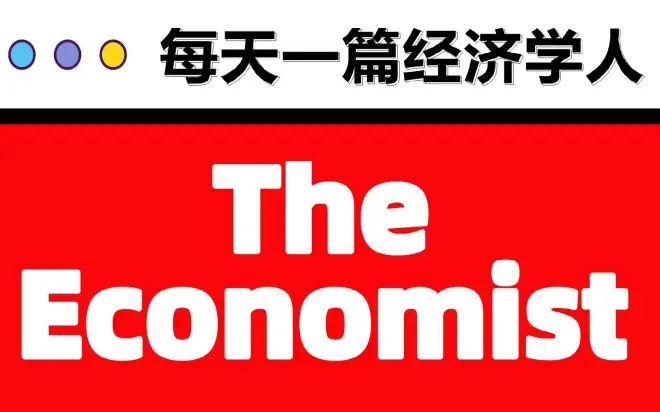每天一篇经济学人 | How to do layoff's right 如何处


【本篇文章可学习的单词:多种裁员说法】
It’s not just Twitter. The pink slips are piling up at some of the biggest names in tech. Mark Zuckerberg, the founder of Meta, is eliminating more than 11,000 roles, around 13% of the social-media company’s workforce. On November 22nd HP announced up to 6,000 job losses, which would be around 10% of the IT firm’s staff. Amazon’s boss, Andy Jassy, has warned of more cuts next year, on top of those already unveiled in the retailer’s devices and books businesses. Stripe revealed that 14% of the staff at the digital-payments firm were being let go. Snap and Shopify announced their own rounds of lay-offs earlier in the summer.
不仅仅是Twitter。一些最知名的科技公司纷纷发出解雇通知。社交媒体公司Meta的创始人马克·扎克伯格正在裁员1.1万多人,这一比例约占该公司员工总数的13%。11月22日,惠普宣布裁员6000人,约占公司IT员工总数的10%。亚马逊的老板安迪·贾西警告说,除了已经在该零售商的设备和图书业务中推出的裁员计划外,明年还会有更多的裁员。据Stripe透露,其数字支付公司14%的员工被解雇。Snap和Shopify在今年夏天早些时候也宣布了各自的裁员计划。
Jobs are disappearing in other industries, too. Investment banks have started paring staff in anticipation of a slowdown in dealmaking. Property firms are laying people off as housing markets cool. Beyond Meat, which makes plant-based products, cut almost 20% of its workforce in October.
其他行业的也在裁员。由于预期交易活动将放缓,投资银行已开始裁员。随着房地产市场降温,房地产公司正在裁员。生产植物性产品的Beyond Meat公司在10月份裁减了近20%的员工。
The people who suffer most from lay-offs are those who lose their jobs. But the colleagues who are left behind also endure lasting consequences; and for managers, this group is the one that determines success. Some suffer a form of survivors’ guilt, asking themselves why they kept their jobs and colleagues did not. (Only at Twitter do the people leaving feel guilty about those who are left behind.) Others must grapple with the practicalities of replacing departed workers and with the stress of heightened job insecurity: if the axe has fallen once, it may do so again.
受裁员影响最大的是那些失去工作的人。但被留下的同事也要一直承受后果; 对于管理者来说,这个群体是决定成功的因素。有些人会有一种幸存者的负罪感,问自己为什么自己保住了工作,而同事却没有。(只有在Twitter,离开的人才会对那些被留下来的人感到内疚。) 其他公司则必须努力应对接替离职员工的现实问题,以及工作不安全感加剧带来的压力: 如果裁员的斧头落下了一次,可能还会再落一次。
The results can be depressed morale, lower productivity and unexpected costs. Research conducted in 2008 by two academics at the University of Wisconsin-Madison found that, for an average company, downsizing the workforce by 1% was associated with a 31% increase in voluntary turnover rates. That means more disruption as well as additional money spent on filling open positions.
结果可能是士气低落,生产力下降和意外成本。威斯康星大学麦迪逊分校的两位学者在2008年进行的一项研究发现,对于一家普通公司来说,裁员1%与自愿离职率增加31%有关。这意味着更多的干扰,以及更多的资金用于填补空缺职位。
To keep survivors motivated, managers need to get three things right. The first imperative is to appear fair. This is a capacious concept. Fairness involves treating departing colleagues well: one particular wrinkle with the current tech lay-offs is that they affect lots of immigrant workers, whose eligibility to remain in America is now in doubt. It means showing sensitivity about executive compensation: saying that downsizing is the hardest thing you’ve ever done is less credible when profit-related bonuses end up paying for another weekend house.
为了让幸存者保持动力,管理者需要做好三件事。第一要务是表现得公平。这是一个广泛的概念。公平包括善待即将离职的同事:当前科技公司裁员的一个特别问题是,它影响了大量移民工人,这些人是否有资格留在美国现在还存疑。这意味着要对高管薪酬表现出敏感: 当与利润相关的奖金最终被用来支付另一栋周末别墅时,说裁员是你做过的最艰难的事情就不那么可信了。
Fairness also means sharing the rationale for why individual people have gone, whether because they sat in sputtering businesses or because their own performance was questionable. “Stacked-ranking” systems, in which employees are forced into a ranking of highest to lowest performers, are increasingly out of favour. But in theory at least, they do provide a merit-based measure for decisions on where to make cuts. According to The Information, a news site, Google is going to increase the proportion of employees it identifies as low performers.
公平还意味着分享个人离职的基本原因,无论是因为他们坐在摇摇欲坠的企业里,还是因为他们自己的业绩有问题。“末位淘汰制”系统,即员工被迫按照从高到低的表现进行排位,越来越不受欢迎。但至少在理论上,它们确实为在何处削减开支的决定提供了一个基于业绩的衡量标准。据新闻网站The Information报道,谷歌将增加其认定的低绩效员工的比例。
If decision-making about who gets the chop appears capricious, then managers will also fail to achieve their second goal: to assure survivors that they don’t need to start looking for a new role, too. It matters that lay-offs do not become regular events. Research conducted at a large manufacturer in 2003 found that workers who had been exposed to repeated rounds of cuts felt less secure in their jobs and had greater intention to quit. In his memo in August, Evan Spiegel, Snap’s boss, made a point of saying that a 20% reduction in the social-media firm’s workforce should substantially reduce the risk of more axings.
如果谁被解雇的决策显得反复无常,那么管理者也将无法实现他们的第二个目标:向幸存者保证,他们不需要也开始寻找新的职位。重要的是,裁员不要成为常态。2003年在一家大型制造企业进行的研究发现,那些经历了多次裁员的员工对自己的工作缺乏安全感,更倾向于辞职。Snap的老板埃文•斯皮格尔在8月份的备忘录中强调,该社交媒体公司裁员20%将大幅降低更多裁员的风险。
The third area of focus is workload. Cutting headcount and asking the survivors to do more might seem like a marvellous idea in head office. Some bosses say so outright: Elon Musk, chopper-in-chief at Twitter, is open about his belief in long hours by small teams. But it is a risky approach, as likely to reduce job satisfaction as yield leaps in productivity. Downsizing has a greater chance of succeeding if the burden on remaining employees does not spike.
第三个重点领域是工作量。在总部,裁员和要求幸存者做更多工作似乎是一个绝妙的主意。一些老板直截了当地这么说: Twitter首席“裁员”官埃隆•马斯克公开表示,他相信小团队应该长时间工作。但这是一种有风险的方法,可能会降低工作满意度,同时带来生产率的飞跃。如果剩余员工的负担不增加,后续裁员成功的机会就更大。
None of this is easy territory. Lay-offs are bound to leave scars. But managing the fallout is simpler if the employees who are left behind still trust their bosses to get the big things right. Many of the memos being fired off by tech leaders contain apologetic admissions that they expanded their workforces too fast as a result of the pandemic. The honesty is necessary but it can plant another doubt in survivors’ minds: if they can foul up once, why not again?
这些都不是容易做到的。裁员必然会留下伤疤。但是,如果留下来的员工仍然相信他们的老板能把大事办好,那么处理这些后果就会更简单。科技公司领袖发出的许多备忘录都包含歉意,承认他们因疫情而过快扩充了员工数量。诚实是必要的,但它会在幸存者的脑海中植入另一种怀疑: 如果他们可以搞砸一次,为什么不会再搞砸一次呢?

